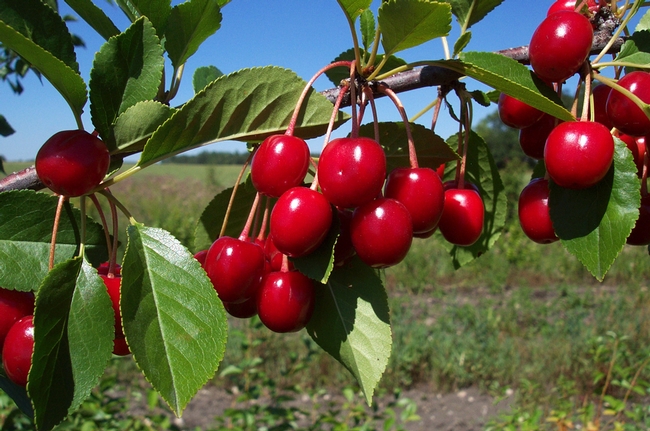Selecting Fruit Trees
Dustin Blakey, Inyo-Mono Farm Advisor
Fruits are always favorites in the garden. Eat a fresh peach or plum and you’ll be obsessed with getting your own source of ripe fruit that you can share with the crows. If you are interested in growing your own fruits, fall is the season to get started.
Impulsive acquisition of fruit trees and berries while out on a shopping trip often leads to disappointing results. Not every variety of fruit can be grown on the Eastside. Plants bought on a whim or chosen because you recognize the name may not thrive in our climate or produce the best possible fruit. I am always amazed by how many ‘Red Delicious’ apples get planted in gardens each year, yet I have never met a person who actually likes to eat them!
There are two tried and true ways to get fruits (trees or berries) for your garden: you can go to a local, knowledgeable nursery in spring and buy containerized plants, or you can order bare-root plants in fall for shipment in spring. If you elect to order fruits from a mail-order nursery, you should make your selections in fall. If you snooze, you lose! Variety choices become meager as spring approaches.
As a rule, bare root trees are cheaper and because you can choose from many vendors, selection is best. The nurseries know when to ship, and you will get your plants still dormant. The disadvantage is that you need to be ready to plant when they arrive or they may die.
Some fruits will need to be cross-pollinated. Most catalogues and websites will mention this and will provide a pollination chart to help you choose.
The following are helpful hints in selecting what fruits to plant:
- If they are adequately watered, brambles (canefruits) are probably our best fruit crop. Look into planting modern cultivars. You may reminisce about a certain berry you once ate in your youth—and it may be great—but great breeding work has been done on blackberries and their kin in the past 30 years.
- Stone fruits are the least reliable of our fruit choices. They tend to flower early and get zapped by cold. Apricots and almonds are especially bad. Try to choose late-flowering types; these tend to be late-bearing as well.
- Apricots, peaches, nectarines, and sour cherries do not require cross-pollination. Sweet cherries do. Apples, pears, and most plums need cross-pollination.
- Even if a crop doesn’t require cross-pollination, having more than one variety can extend your season and a few self-fruitful crops like blueberries do better with cross-pollination.
- Most table grapes do fine here. We don’t raise them, but muscadine grapes will grow here and are a unique treat. ‘Carlos’ and ‘Noble’ are good muscadines to start with.
- If you order figs and they arrive before nights are consistently over 40°F, pot them up and keep them inside until it is safe. ‘Mission’ is not reliably hardy here.
- In most cases, when you have the option to do so, choose a dwarf rootstock.
- Pomegranates are hardy in the Owens Valley but may have issues with frosts and too short a growing season, especially in Bishop, for some varieties. Plant with caution.
- Remember that grocery store fruit is not being grown locally. In most cases, the variety you should grow in your garden will not be the typical ones seen in the produce department.
- Common California varieties and growing information can be found at The California Backyard Orchard.
